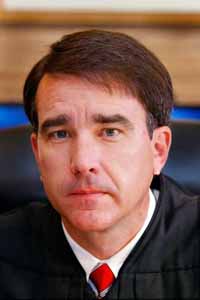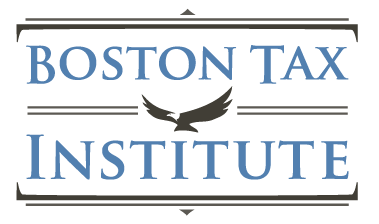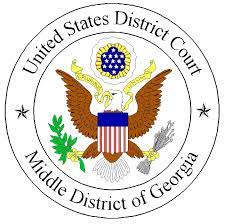Big Escambia Ventures LLC is the tax matters partner in thirteen partnerships that are currently in Tax Court. Judge Albert Lauber, whom Lew Taishoff calls “Scholar Al”, refers to the 13 cases as the Big Escambia Group. The principals purchased the 4,608 acre Big Escambia Tract in Escambia County Alabama for $9.5 million in early 2014. They split it into thirteen parcels. Twelve of the parcels became the main assets of investment partnerships. Near the end of 2014 the investment partnerships donated easements on the properties to the National Wild Turkey Federation. Then the partnerships donated the fee interests in the properties to NWTF. One partnership known as BEP, which held 710 non-contiguous acres not suited for mining skipped the easement step. All in, $187,370,000 in charitable contribution deductions were allocated to investors, who had contributed just over $36 million, for property that had changed hands in the same year for $9.5 million in an arms length transaction. The IRS did not approve and neither does Scholar Al. He explains it in his opinion in Excelsior Aggregates LLC – T.C. Memo 2040-69 filed May 30, 2024,
The Industry Based On Nonsense
In 2020 the Senate Finance Committee issued a report on syndicated conservation easement transactions, which I covered. One of the big takeaways was that the engine of every syndication was an inflated appraisal. According to the industry trade group Partnership For Conservation (P4C), the inflated appraisals were a feature rather than a bug. In an article in Tax Notes on “myths” about conservation easements P4C President Robert Ramsay wrote:
“Myth 7: A conservation easement’s value cannot exceed the current value of the land.
Reality: A conservation easement’s value is the value of the development rights that are forfeited in perpetuity when an easement is placed. Treasury’s own regulations require that these rights be valued based on the land’s highest and best use. When the existing state of land is different from its highest and best use, giving up the opportunity to develop the land forgoes substantial value. It is that value that the law permits as a deduction. The IRS ignores Treasury regulations, and years of court cases, when it asserts that a conservation easement deduction cannot exceed the value of the land itself. If the IRS wants to change these rules, it must do so through a legitimate rulemaking process, but it has not done so.” (Emphasis added)
In the Senate report there is a quote from an email string of a promoter:
“… conservation easement appraisal is very different from a normal real estate appraisal since it takes in to account all future economic benefit on the land and takes future value discounted to present day.”
This belief that a conservation easement can be valued based on the discounted cash flow of a perceived highest and best use that is unsupported by the current market was essential for making the deals work, It accounts for the two step donation process used in the Big Escambia deals.
It is rather intriguing that in the most recent batch of Tax Court decisions the notion that easement valuation is fundamentally different does not even come up as something that might be considered. This one is no exception.
The Opinion
Judge Lauber ruled on three of the thirteen partnerships. They are referred to as EAG. ASG and BEP. BEP is not very exciting. It represents the 710 non-contiguous acres. They claimed a charitable deduction of $2,070,000, Judge Lauber allowed $1,975,000. EAG at 301 acres had a charitable contribution of $12,525,000 for the easement and $4,175,000 for the encumbered property for a total of $16,700,000. Judge Lauber allowed $693,000. ASG with 385 acres had claimed an easement deduction of $11,215,000 and a fee simple deduction of $3,375,000. Judge Lauber allowed $810,000.
The three cases are to be considered test cases with the other ten being decided based on similar principles. The other 10 are all easement mining deductions ranging between $37,000 and $63,000 per acre. Judge Lauber is down around $2,000 per acre. Applying a similar percentage to the remaining ten we can expect a total disallowance in the vicinity of $175 million for the Big Escambia partners.
The idea that easement valuation is fundamentally different plays no part in the opinion. Judge Lauber wrote:
“A less nuanced analysis may be adopted here. BEP conveyed no easement but rather donated an unencumbered fee simple interest in the property it held. ASG and EAG, which did convey easements, contributed to the same donee, during the same year, fee simple interests in the easement-encumbered parcels. In each case, therefore, the donee received during the taxable year 100% of the real property interests within each parcel, which equates to the parcel’s “before” value. The “before” value of the parcels thus determines the total allowable charitable contribution deduction.”
You can learn an awful lot about the sand and gravel mining business reading this opinion, but I’m going to pass on sharing it with you. A key point, that pretty well knocks out most syndicated deals, is the point that the “best evidence” of a property FMV is the price at which it changed hands in an arm’s-length transaction reasonably close in time to the valuation date. The $9.5 million that the promoters paid fits the bill as to being arms-length and reasonably close in time. Judge Lauber finds the $2,148 per acre the best available evidence of the value of the property.
When Judge Lauber looked at the discounted cash flow valuations that came from opening twelve hypothetical sand and gravel mines he found unreasonable assumptions about the recoverable volume of minerals, supply, demand, pricing and the cost of extraction. In rejecting the income method for valuing the parcels, he quotes a Fourth Circuit opinion:
“ valuations almost always achieve chimerical magnitude, because, in the mythical business world of income capitalization, nothing ever goes wrong. There is always demand; prices always go up; no competing material displaces the market.”
What About The Investors ?
What really worries me about these deals is what must be happening to the investors. My data is anecdotal, but I believe that a lot of them are HENRYs (high earnings not rich yet). According to one of my sources many of them bought these things year after year. The deals were structured to yield a deduction of 4.389 for every dollar invested. With a top federal rate of 39.6 and a top Georgia rate of 6% that is the magic number that will have you paying your taxes at fifty cents on the dollar.
So imagine someone who sat down with their accountant in December 2014 and decided to put $100,000 into Excelsior Aggregates rather than pay a $200,000 balance due. Their charitable deduction of 438,900 is cut to $17,995. Just the federal tab on that adjustment adjustment is $166,678. The 40% gross valuation penalty raises it to $233,349. The interest on that through June 3, 2024 is $133,637. Imagine someone who then went on to invest in a similar deal in 2015, 2016, 2017 and 2018. If the net savings were invested in some sort of side fund that earned about 15% after tax, they can look at it as nothing ventured nothing gained, but I doubt that happened very often.
Tax Court Opinions Are About The Past
In 2019 Peter Sepp wrote for the National Taxpayers Union a piece titled New Research Undercuts IRS Claims about Conservation Deductions. He cited a Tax Notes article Valuing Conservation Easements An Empirical Analysis of Decided Cases by Jenny L. Johnson Ware. Ms. Ware found that in decided cases the Tax Court had allowed roughly 80% of taxpayer claimed values ($74,669,396 out of $92,728,417), According to Sepp, this refuted IRS claims of inflated appraisals and overstated deductions. As it happens the most recent decision, Pine Mountain Preserves, came down in 2018 and it covered deduction taken in 2005, 2006 and 2007. There was one case covered in her article that concerned a 2011 deduction. None of the cases she covered had been syndicated.
It is only recently that the Tax Court gives us a definitive opinion on what was going on in 2014 and in the case of Excelsior Aggregates, less than 5% of the claimed deduction is being allowed.
Other Coverage
Lew Taishoff focused on another aspect of the case with Key Witness Takes The Fifth.
“To spare you suspense, in all three (count ’em, three) of these consolidated cases (by which the others in this 14-ring circus agreed to be bound), the appraisals were prepared by CW. But Judge Scholar Al had to try these cases in part because CW was unavailable. CW remains unavailable, because “the parties informed the Court that, if Mr. CW were called as a witness, he ‘is currently expected to invoke his Fifth Amendment privilege in these consolidated cases with respect to all matters.’ In a joint status report filed April 4, 2024, the parties represented that, ‘absent a grant of immunity, Mr. CW remains unavailable to testify.’” T. C. Memo. 2024-60, at p.4, footnote 4. (Name omitted).”
Anna Scott Farrell has Tax Court Nixes $30M In Conservation Easement Deductions behind the LAW360 paywall.
For a round up of over a decade’s worth of coverage on conservation easements, check out my Round Up.
On May 13, 2024 an exciting jury trial will commence in the United States Court House in Athens, Georgia. Tony D. Townley, cofounder of Zaxby’s, and Elizabeth A. Townley are suing the United States of America for a tax refund of $43 million based on charitable deductions for conservation easements valued at $166 million. How are easements on 794 acres with basis of $1,277,420, assessed at $1,678,435 worth $166 million? Well gravel has been discovered on the land. Actually there is a regular old gravel rush going on in Georgia, but it is mostly being fought about in Tax Court. This case is different. It is not about a syndicated deal and it is in district court, not Tax Court. And the deduction is quite high. The only case I have found in the same ballpark is Coal Property Holdings, another mining easement deal.
How Are Things Shaping Up?

Clay D Land
\
Judge Clay D. Land last month ruled on multiple motions for summary judgement from both sides. In his introduction he sort of scolded the government:
“From the heated rhetoric flowing from some of the briefing in this case, it is evident that the IRS and its counsel passionately believe that this worthy conservation scheme has been abused by greedy taxpayers assisted by clever lawyers, crafty accountants, and over-zealous appraisers. That rhetoric, some of which rises to the level of hyperbole, is not particularly helpful in focusing on the precise legal issues to be decided in the present case. Quite frankly, when legitimate skepticism evolves into generalized cynicism, such an attitude is typically counterproductive to assisting the Court to objectively evaluate legal requirements on a case-by-case basis.”
We could pick a little nit with that. If the Townleys had not paid the tax and gone to Tax Court that would have been litigating with the IRS and IRS attorneys. In district court they are suing the United States of America facing off against attorneys from the Department of Justice Tax Division. Judge Clayton continues:
“While Congress certainly expected that these types of deductions would be closely scrutinized, it did not intend for the IRS to create “gotcha traps” to ensnare taxpayers who seek the deductions in good faith. An enforcement attitude tempered by an expectation of substantial compliance should prevent abuse while accomplishing the worthy public purpose of conservation easements.”
The Towleys get judgement that they had a valid conservation purpose. They did not get summary judgement on the issue of their continuing timber operations interfering with that purposes. They also win on the appraisals that they submitted were “qualified appraisals”. An appraisal does not have to be right to be qualified.
Valuation is the big issue. Since easements are not bought and sold all that often, the regulations allow an easement to be valued by taking the fair market of the property without the easement and subtracting the fair market value of the property after the easement. Typically the big argument will be about the before value. The preferred valuation method is comparable sales, but it is important to consider the highest and best use of the property, meaning the use that will bring the owner the most money.
The Townley appraisers argue that gravel mining is the highest and best use. Further in their view there are no comparable sales of land with proven reserves since the information is not publicly available. Hence they value the property, in part, by taking the discounted cash flow from mining for the next twenty years. The appraisers for the government do not agree that the gravel mines are economically feasible.
What does Judge Land think about all this? He is leaving it to the jury.
Brilliant Strategy
David Aughty, representing the Townleys, has a great reputation. A 1975 Citadel graduate he won a decision in the Supreme Court, which does not take all that many tax cases. He has become something of an authority in conservation cases. A very knowledgeable attorney who prefers to be off the record wrote me that:
“The strategy to put this case in district court in a refund case where, it appears, a jury will opine on the competing valuations is brilliant. I assume that was David Aughtry. Without knowing all the details, I think the Tax Court probably would have found some reason to sink taxpayer’s claim, either on technical grounds or some other grounds.”
And
“All Townley has to do is to get it to the jury (which the judge seems to be allowing) and the jury will also have some tendency to help the hometown boy. Notwithstanding there, the mega dollars involved may put some of the good old boys on the jury off.”
Going through the motions and depositions I can see some of these issues. There is a motion to exclude exhibits that would support a wealth based bias against the Townleys. That would include mention of the roughly billion dollars that Townley got from Goldman Sachs for his interest in casual restaurant chain Zaxby’s in 2021.
There also seems to be a strong effort to distinguish the Tonwley’s donation from syndicated deals. The Townleys had owned the property for some time rather than having acquired an interest briefly before the easement was donated. They don’t want this case to seem at all like Savannah Shoals where Judge Goeke of the Tax Court allowed only $480,000 of a claimed $23 million deduction for a different Georgia gravel mine.
Lew Taishoff who blogs the Tax Court with incredible intensity also gave me some comments.
“Townley is a local good ol’ boy who cares about The Home Place, and made good selling fried chicken to the locals, not some hedgefund sharpie who made a pile swindling the home folks.
And if he gets a jury, the odds are 99-to-one none of them will begin to understand what the experts are talking about. If lawyers can’t add, and judges won’t add, juries are even less numerate. Mention tax law, and you might as well be talking about Cabbalah or astrophysics.
Remember, USDCJs aren’t tax specialists. I doubt one in fifty does her/his own tax return, much less has ever done anyone else’s.”
Reflection
Recent legislation has significantly reigned in the syndication of easement deductions. That legislation has no effect on transactions such as this one. Highly paid professionals won’t be able to pay taxes on their bonuses for fifty cents on the dollar through buying into an easement partnership at year end anymore. Something tells me that the people who dreamed up that technique will be offering something new.
Still, someone with deep pockets and patience might be able to effectively buy their mountain retreat for free if there is enough gravel down there. Although not ideal, the solution might be something like the Low Income Housing Tax Credit where the tax benefit is apportioned to state agencies which award it to individual projects. In the meantime I will be anxiously awaiting the verdict in this case.
For great value continuing professional education. I recommend the Boston Tax Institute

You can register on-line or reach them by phone (561) 268-2269 or email vc@bostontaxinstitute.com. Mention Your Tax Matters Partner if you contact them.
Originally published on Forbes.com.
For articles oriented toward tax professionals check out Think Outside The Tax Box.
My new book Reilly’s Laws of Tax Planning is now available from TOTB.


































































































Your blog is a constant source of learning.
This is the most comprehensive article I’ve found on this subject. Great job.